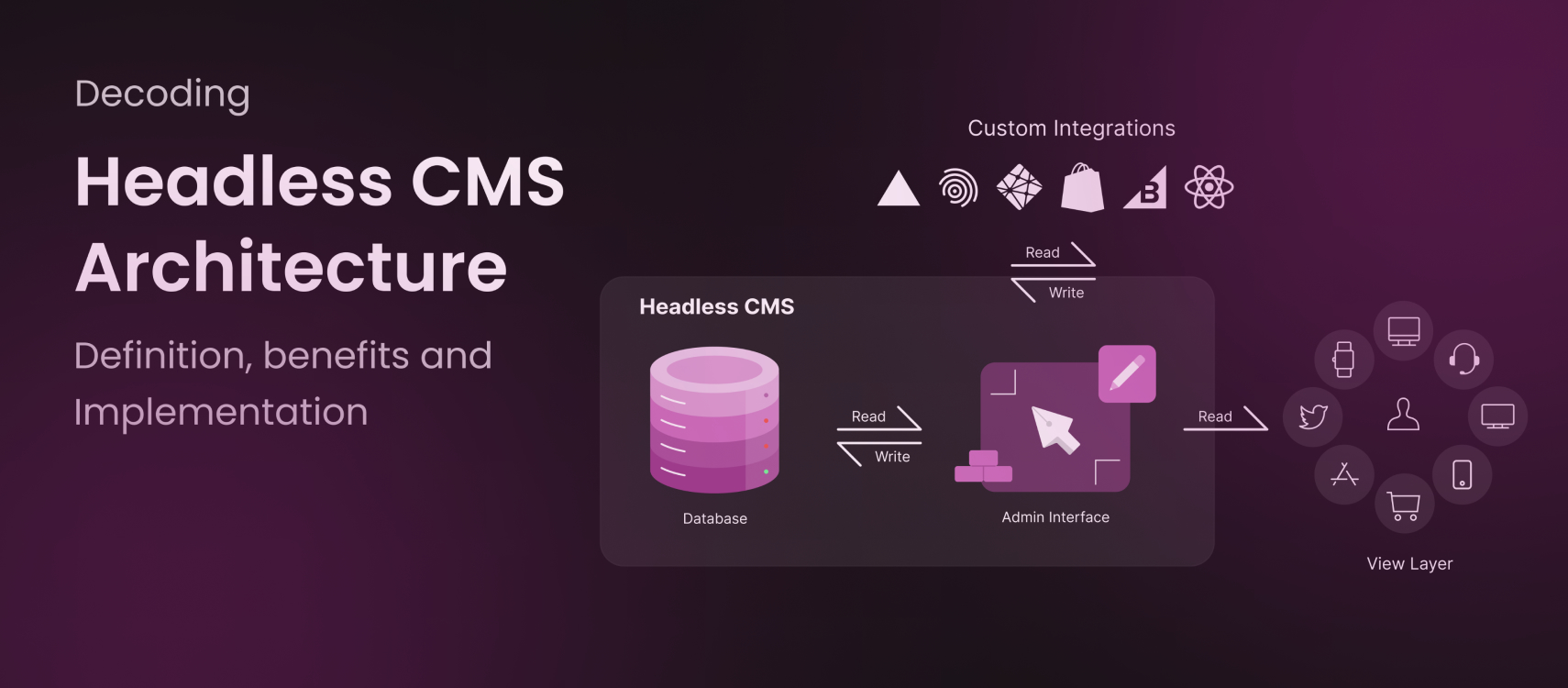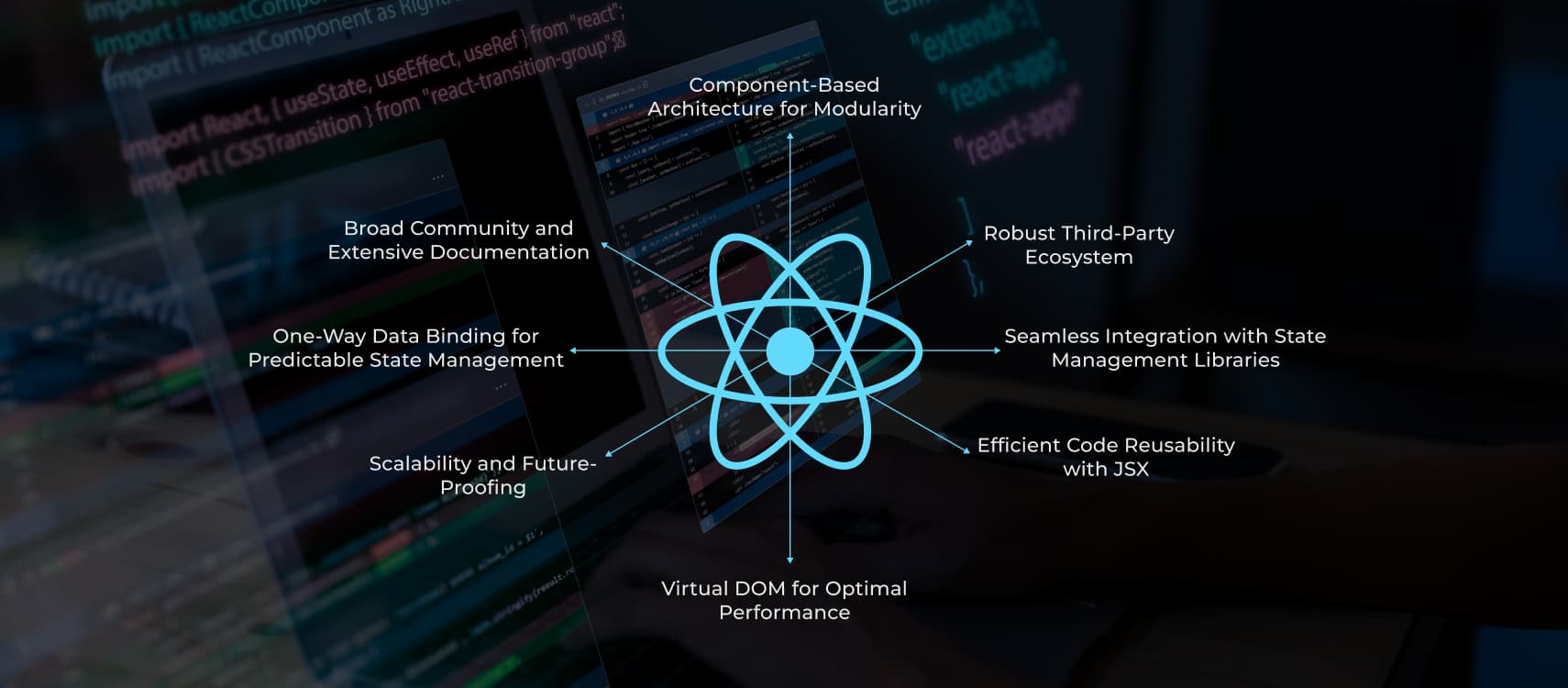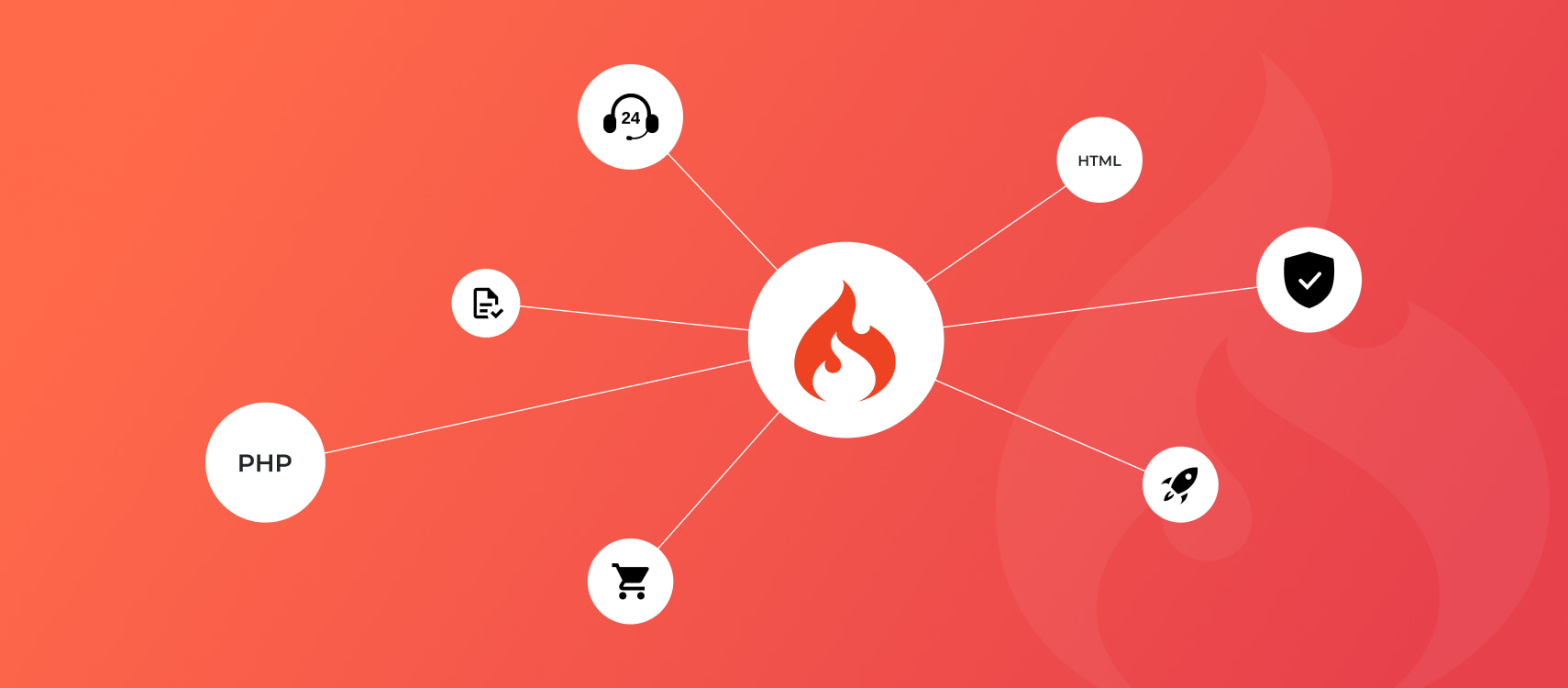Table of Contents
- Headless CMS Architecture
- Real-World Examples
- Advantages
- Implementation
- Challenges
- Ending Notes
In the dynamic realm of content management systems (CMS), the emergence of headless architecture has disrupted traditional approaches and ushered in a new era of flexibility and innovation. Unlike monolithic CMS solutions, headless CMS architecture decouples the front-end presentation layer from the back-end content management, offering a modular and agile framework.
In this article, we will talk on all questions concerning headless CMS architecture, including definition, real-world examples, advantages and its implementation.
Unveiling Headless CMS Architecture
Headless CMS architecture, also known as decoupled CMS, separates content creation and management from content delivery. In this model, the back-end content repository, where content is authored and stored, is decoupled from the front-end presentation layer that delivers content to users. This decoupling allows developers to choose the most suitable technology stack for each layer, fostering flexibility and promoting innovation.
-
Content Creation and Management:
With a headless CMS, content authors and editors interact with a user-friendly interface to create, edit, and organize content. This content is stored in a structured format within the CMS’s back-end repository, often using APIs or a GraphQL interface.
-
Content Delivery:
The front-end presentation layer, which can consist of websites, mobile apps, or other digital channels, retrieves content through APIs from the headless CMS’s back-end repository. This separation enables developers to design engaging and customized user experiences while leveraging the content management capabilities of the CMS.
Real-World Examples of Headless CMS
Several real-world examples showcase the versatility and power of headless CMS architecture across different industries.
-
E-Commerce:
Headless CMS architecture empowers e-commerce platforms to deliver consistent and engaging content across multiple channels. For instance, an online fashion retailer can use a headless CMS to manage product information and descriptions, while the front-end can be developed using a technology stack optimized for user experience.
-
Media and Publishing:
Media organizations can leverage headless CMS to streamline content distribution across web, mobile apps, and other platforms. A news website, for instance, can efficiently manage articles, images, and videos through the CMS’s back-end, ensuring a seamless and unified content experience for readers.
-
Travel and Hospitality:
In the travel industry, headless CMS enables easy management of destination information, travel guides, and booking details. By decoupling content creation from presentation, travel companies can provide relevant and up-to-date information to users across various devices.
Advantages of Headless CMS Architecture
The adoption of headless CMS architecture brings forth a plethora of advantages that resonate with modern content creation and delivery requirements.
-
Flexibility and Innovation:
Headless CMS liberates developers from the constraints of monolithic systems, allowing them to choose the most suitable technology stacks for each layer. This flexibility fosters innovation, enabling the creation of unique and dynamic user experiences.
-
Multi-Channel Consistency:
Headless CMS ensures consistent content delivery across diverse channels, including websites, mobile apps, wearables, and emerging technologies. Content updates made in the back-end are seamlessly reflected across all front-end interfaces, maintaining a unified user experience.
-
Improved Performance:
Separating content creation from delivery optimizes performance by reducing the load on the front-end. Developers can design front-end interfaces that prioritize speed and responsiveness, resulting in improved user engagement and satisfaction.
-
Enhanced Collaboration:
Headless CMS facilitates collaboration between content authors, developers, and designers. Content creators can focus on crafting engaging content, while developers design and implement the user interface, all without hindering each other’s workflows.
-
Future-Proofing:
As new technologies and devices emerge, headless CMS architecture remains adaptable. With the ability to integrate with new front-end technologies, businesses can future-proof their content delivery strategies and stay ahead of industry trends.
-
Scalability:
Headless CMS systems are inherently scalable, allowing businesses to handle increased content volumes and growing user bases. As traffic surges, organizations can ensure seamless content delivery without compromising on performance.
Implementing Headless CMS Architecture
Implementing headless CMS architecture requires careful planning and consideration of various factors.
-
Technology Stack Selection:
Choose appropriate technologies for both the back-end content repository and the front-end presentation layer. The selection should align with the organization’s goals, development expertise, and user experience requirements.
-
API Integration:
APIs play a crucial role in headless CMS architecture. Ensure that the headless CMS provides robust API capabilities for content retrieval and updates. The APIs should be well-documented and support various data formats.
-
Front-End Development:
Front-end developers must design and develop user interfaces that retrieve and display content from the headless CMS’s back-end. This entails working with APIs and integrating the content seamlessly into the user experience.
-
Content Modeling:
Proper content modeling is essential for a successful headless CMS implementation. Define content types, attributes, and relationships to ensure structured and organized content that can be easily managed and delivered.
-
Performance Optimization:
Given the decoupled nature of headless CMS, performance optimization is crucial. Implement caching strategies, optimize API requests, and ensure that the front-end presentation layer is designed for speed and responsiveness.
Challenges for Headless CMS Architecture
While headless CMS architecture offers numerous benefits, it also presents certain challenges that organizations must address during implementation.
-
Learning Curve:
Transitioning to headless CMS may involve a learning curve for content authors and editors, as they adapt to the new content management workflow and interface.
-
Complexity:
Decoupling content creation from delivery can introduce complexity, especially in managing content relationships and ensuring consistent updates across various channels.
-
Customization Efforts:
Customizing the front-end presentation layer requires development efforts tailored to specific platforms. This may involve additional resources and expertise.
Ending Notes
Headless CMS architecture has redefined the landscape of content creation and delivery, empowering organizations to create dynamic, consistent, and engaging user experiences across a multitude of channels. As the digital ecosystem continues to evolve, headless CMS architecture stands as a powerful tool for modern content management, positioning organizations to thrive in a dynamic and interconnected world.










